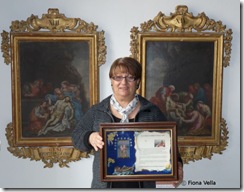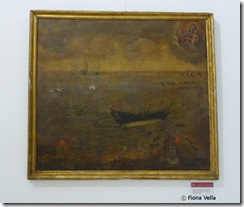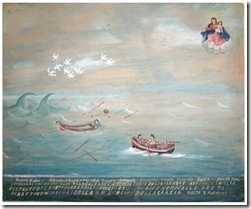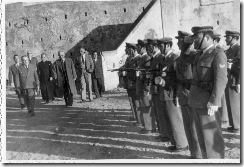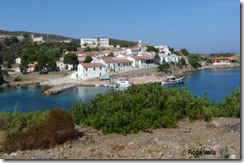Archive for the ‘Times of Malta’ Category
-
The story of a relative of a Titanic survivor
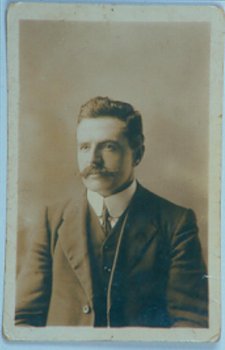
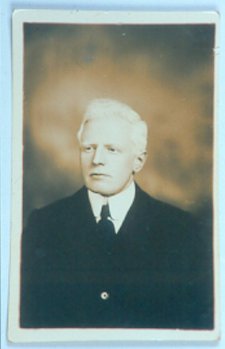

At 11:40 p.m. on April 14th 1912, RMS Titanic, the largest ocean liner ever built by the hands of man, hit an iceberg which ripped holes in several of its water-tight compartments, dooming its destiny and that of all its passengers. A few hours later, at 2.20am, the survivors that managed to get on the few boats that were available, watched the horrifying spectacle of the Titanic with its lights shining brightly and with more than 1500 passengers still on board, being engulfed in the deep dark and icy abyss.
It was a night where so many significant and difficult decisions had to be taken quickly since they determined who was to survive and who would be left behind. Certainly there were the shameful arrangements where the richest passengers were selected from the others in order to leave the ship first. However there were also the heroic instances wherein several men opted to stay behind in order to allow the survival of more women and children. So who knows what would have been the fate of Alexander James Littlejohn, a First Class Steward on the Titanic, had he not been ordered to get on board life-boat 13 in order to row about 35 women and children to safety?
During his lifetime, Alexander J Littlejohn rarely talked about this tragic night, like most of the other survivors. Yet in 1912, he gave this graphic eye-witness account of the sinking of the Titanic to The Daily Telegraph:
“I went to fill up Boat 13 and got about 35 women and children into it. We shouted for more women but there were none forthcoming. We had a few First Class male passengers in. An officer ordered two of us to get in and help row the boat and I happened to be one of the fortunate ones to be ordered in…. We could see the Titanic sinking by the head. Her forward ‘E’ deck ports were under the water and we could see the lights gradually go out on the ‘E’ deck as she settled down. All her other lights were burning brilliantly from stem to stern. We watched her like this for some time, and then suddenly she gave a plunge forward and all the lights went out. Her stern went right up in the air. There were two or three explosions and it seemed to me that the stern part came down again and righted itself. Immediately after there were terrible cries for help; they were awful and heartbreaking.”
For several years, Alexander had run two pubs The Rising Sun in London, and the Crown in Hastings, Sussex. He only went to sea after his wife died in 1910, leaving him with three young children. His sister looked after them and he joined the White Star Line Company in 1911. Incidentally, his first appointment was on the RMS Olympic’s maiden voyage and the following year, he joined the RMS Titanic which was also going on its first crossing at sea. Nonetheless, the similarity between the two ended there as the latter journey marked both his life and his appearance.
His grandson, Philip Littlejohn, has compelling proof which manifests clearly the shock that his grandfather had suffered during that particular night. Indeed, in a photo taken some time prior to his embarkation on Titanic, Alexander is portrayed as a man aged 40 with dark hair and a heavy moustache, and yet in another photo taken just six months after the disaster, he looks notably different, particularly with his white hair and eyebrows. Surprisingly, despite this traumatic experience of surviving the sinking of the Titanic, Alexander returned to sea in October 1912.
Without knowing, in life-boat 13, Alexander had rowed to safety the youngest Titanic survivor, Millvina Dean, who was only nine weeks old at the time, which person would also be the last living link to the Titanic disaster since she outlived all the other survivors. Alas, the two never met each other again and Alexander died in 1949, aged 77. However Dean succeeded to meet his grandson Philip and he worked with her over a period of ten years on TV and radio. She died at the age of 97, in May 2009, and Philip was present for the ceremony when her ashes were scattered near the departure point of the fateful voyage.
Ironically, Millvina Dean and the Titanic shared the same age, and she had planned to join Philip Littlejohn and the rest of the passengers on the Titanic memorial cruise ship, MS Balmoral, which was chosen to commemorate the 100th anniversary from this bitter tragedy. Dean’s father was one of those brave men who had fought his way through the massive desperate crowd in order to get his wife and his two children safely on a life-boat and then he had bade them goodbye and turned away to await his gruesome end. Although Dean did not make it to be a 100, Philip included her story too during a series of lectures that he presented on board the MS Balmoral wherein he narrated the events leading up to the liner’s fateful collision, including eye-witness accounts and the rescue by the liner Carpathia.
The MS Balmoral set sail on the 10th April 2012 from Southampton in order to follow the exact route that the Titanic took 100 years before. It carried on it 1,309 paying passengers, the same number that were on board the Titanic. During its 12-night voyage, it offered meals from the Titanic’s original menu and a five-piece band recreated the atmosphere that the original team of artists had played on board the ill-fated ship. On the night of the 14th April, this memorial cruise stopped over the Titanic’s wreck site, and services were held in memory of those who lost their lives in 1912. Then, it continued its way to Halifax, Canada where many of those who lost their lives are buried. The voyage ended in New York, the place where Titanic was due to arrive a century before but never did.
Some critics thought that this idea was macabre and in bad taste. Yet Philip commented, “For me, this was the voyage of a lifetime and a chance to revisit a place that means so much to my family.” He insisted that this memorial cruise was a special remembrance opportunity which made possible, particularly to those whose relatives had been on board the Titanic, to visit the spot where so many dear ones had lost their lives.
In reality, Philip had already involved himself far more deeply in this Titanic story when on the 29th July 2001, he embarked on a dive of a life-time which led him right at the site of the Titanic’s wreck which lies at a depth of about 3,800m. Although quite a number of individuals have visited this area from the discovery of this wreck back in 1985, Philip is the first relative of a Titanic passenger or crew member to have made this experience.
“We went out using the same Russian ship used by James Cameron’s film crew when he was making the documentary, Ghosts of the Abyss,” he says. “The ocean was like a millpond. Looking like Formula 1 racing drivers in our blue flame-proof overalls (protection from fire in the oxygen rich interior), we boarded Mir 1 and were lowered into the ocean. The interior of the submersible seemed airless, as we watched through a one-foot thick porthole as water filled our view. The water turned from blue to green to black as we descended. There was no movement to indicate our descent, just the figures on the depth indicator increasing as we sank to the bottom of the Atlantic.”
“We were three on board including the Russian pilot. My companion had made an extensive study of the ship over a number of years and was excited at the thought of actually seeing the vessel. However my thoughts were with how my grandfather would have felt if he could have gone back to the vessel that he had left eighty-nine years before.”
“It took two-and-a-half hours to reach the wreck. Suddenly with the submersible lights switched on, we got our first sign of the Titanic; the expansion joint on the bow section. We were going round some other areas of the ship when at one moment we saw the lights of Mir 2 approaching out of the darkness. The two submersibles used their robotic arms in order to lay two plaques near the wreck; one from the British Titanic Society and one in memory of the postal workers, all of whom were lost trying to recover the mail soon after Titanic hit the iceberg.”
Certainly, one of the most memorable stages in this dive for Philip was when the submersible reached the area where the lifeboats had been filled with women and children, and where his grandfather had been ordered in by an officer to row life-boat 13. However, he was also very touched when they crossed the debris field which stretches for some 800 meters between the bow and stern sections of the Titanic. “It was this that I found the most moving part of the dive, as here were the Titanic’s passengers’ personal belongings which fell to the sea-bed as the ship broke in two and sank in the early hours of the 15th April 1912.”
This dive took six hours in all since they spent another two-and-a-half hours to reach back the ocean’s surface. Asked whether he was ever afraid that history might repeat itself during these close encounters with the Titanic’s wreck site, Philip dismissed this idea completely.
Critics of these remembrance events of the Titanic’s sinking have often asked the meaning of celebrating such a tragedy and they insist that this site must be regarded and respected as a grave-site and that the victims who lost their lives in such a horrible way should be allowed to rest in peace.
Yet Philip Littlejohn’s viewpoint is quite contrasting to these opinions. In fact, in his book Waiting for Orders he narrates his grandfather’s story so that his experience will never be forgotten.
“No one has celebrated the loss of Titanic,” he maintains, “but we should remember her and those who lost their lives and the related stories of heroism so that we will ensure that such a tragedy would never happen again.”
(This article was published in the supplement ‘Man Matters’ of the Times of Malta dated 19th April 2014)
-
Keeping the faith: ex-voto paintings
In the old days, the sea played a prominent role in peoples’ lives, especially to island inhabitants. It was a source of livelihood for fishermen, a fortuitous space for pirates, a bridge to other countries for travellers, merchants and diplomats, and a channel for soldiers from which to attack the enemy during war.
People were often moving on the sea on various types of vessels, constantly aware of the risk that this involved. They feared corsair attacks and the aggression of unknown dangerous species which could lurk in the waters’ depths. Yet none was worse than the actual possibility of experiencing a terrible storm where the sea turned into a formidable voracious colossus which could engulf whatever dared to be present during its deadly rage.
Meanwhile, it was a world where people in jeopardy were generally left to deal with their own fate, and ironically it was often faith which led to their survival. Historical sources describe how people created ingenious ways of dealing with these dangers by formulating different methods to guarantee a safer voyage, habitually intermingling religion with superstition. One of these practices in Malta involved the production of sacred coins which could be thrown into the sea to calm down the troubled waters. Indeed, sailors were urged to buy these coins which were made out of blessed white candle, a day before Easter, since failure to do so was believed to attract dreadful bad luck. On the other hand, local fishermen are known to have concocted a secret prayer which only the eldest of them knew and which only they could recite in order to shield their boat against the threat of bad weather.
Although hundreds of years have passed from these experiences, nowadays we still have the opportunity to witness the ordeal that our ancestors have gone through whilst being out at sea. Many of these testimonies are still present among us in the form of ex-voto paintings wherein devoted people have illustrated the eventful moments when they were about to die and their faith saved them. Sadly, though we have lost many of these ex-voto along the years, mainly due to improper storage and conservation methods, we still find various examples in numerous chapels, churches, sanctuaries and museums around our islands. Among these, one finds 183 maritime ex-voto in the sanctuary of Our Lady of Tal-Ħerba in Birkirkara, and another 64 in the sanctuary of Our Lady in Mellieħa.
Another interesting collection of such ex-voto is located in the Żabbar Sanctuary Museum. Unfortunately, from the original assortment of 300 maritime ex-voto, today only 85 remain. However, as Ġużeppi Theuma, the Secretary of the Żabbar Sanctuary Museum Commission has informed me, this museum is proud to possess the oldest maritime ex-voto on our islands which as yet is still undated. The next dated ex-voto in this collection goes back to 1631, as the information written on the painting clearly shows. Moreover, this particular ex-voto manifests the full interpretation of the initials V.F.G.A. which generally accompanies several of these paintings. These letters stand for Votum Fecit et Gratiam Accepit which translate in ‘a promise was made and the grace was given’.
Certainly, these ex-voto vary in style and artistry, since they cover various periods of time but also because they were donated by people from different levels of society wherein not all could afford to engage the best painters. Indeed, the acute details that one can observe in some of these works provide valuable information regarding the different type of vessels that were used along the years. Nevertheless all the ex-voto relate the same basic instinctive tendency of humans to turn to faith and to prayers especially when everything seems to be lost, and none other could help. An intriguing observation is that even when being on foreign seas, other than the Mediterranean and therefore far away from the mother-country, Maltese people and also the Knights of the Order which were based on our islands, generally directed their prayers to Our Lady, and particularly to one which they believed mostly in. In fact, this holy entity is clearly displayed in each of the ex-voto in order to show the viewers to whom the donator had prayed whilst being in trouble and who has saved his life. This act was meant as a thanksgiving but it was also intended to act as proof of the miraculous power of Our Lady and therefore to increase faith towards her.
Although the tradition of donating ex-voto has almost died out, it is interesting to note that this custom is still being practiced in our country. In fact, the most recent maritime ex-voto in the Żabbar Sanctuary Museum was donated by Carmen Axiaq on the 21st September 2012. Eager to understand the thought behind this act, I met Carmen at the museum wherein she explained to me the miserable and painful moments that she and her family have gone through when her husband Mario was lost at sea for two days after he got disoriented in the fog whilst fishing. As the search went on and days passed, the possibility of finding him alive started to fade and Carmen and her family were left with no hope except to turn to Our Lady and supplicate her intervention to assist Mario. While her daughter went on Dingli cliffs shouting out her father’s name in the fervent wish to do something to help, Carmen turned to Our Lady of Graces of the Żabbar Sanctuary and she asked her to use one of the twelve stars with which she is blessed in order to enlighten the way so that her husband could come back. Thankfully, Mario was found in time by the authorities and he was brought back to land safely. The family was overwhelmed with happiness but they did not forget who had helped them during their distress. Hence, together they composed an ex-voto wherein they narrated their story and adorned it with photos and hand-made decorations, so that whoever saw it could be reminded of the miracolous potential of prayer and of the greatness of Our Lady.
(This article was published in the Shipping and Logistics Supplement of the Times of Malta dated 5th March 2014)
-
Sardinia’s Alcatraz
There are certain places which are hard to forget since somehow they leave a distinguished imprint on one’s memory. One of these is the island of Asinara which forms part of the territory of Sardinia in Italy. Renowned for its Albino indigenous donkeys from which the name of the island is said to have originated, this particular land is also notorious for its melancholic fate, since it has often been used as a place of seclusion, and was even turned into a penitentiary institution during its last inhabited years. Recently Asinara has been declared as a protected natural reserve and one can only visit it in the company of a licensed guide. Without any more human intervention, the island seems to be turning back to its ancient origins as nature is reclaiming back its rudimental landscape. Tourists who visit the island claim that now this zone has become a delightful gem and yet a previous inhabitant of Asinara questions whether in reality the island has been simply abandoned and left to deal with its own destiny. Surely, a visit to this island will not leave anyone untouched.
Asinara is located off the north-western tip of Sardinia. Its territory is about 52 km2 and it belongs to the government. The island of Asinara can be reached by a boat from the nearby coastal village of Stintino which is located in the province of Sassari. Guided tours can take you to visit the island through a selection of means which include bicycles, landrovers, touristic trains, kayaks and boats. Considering the heat and the fact that we were going to spend almost a day on the island, we opted for the comfortable and colourful tourist train that was scheduled to take us to the most prominent areas of the island.
The island’s vegetation and climate are typically Mediterranean but on some rocky coastal areas, one can also identify an endemic plant species of Sardinia known as Fiordaliso Spinoso. Asinara is also famous for its native Albino donkeys, most of which are regularly observed roaming freely around the island and feeding on shrubs. Yet here visitors can also have a glimpse at the typical Sardinian donkey which is generally smaller and has a brownish colour with a black stripe on its back. Other fauna includes wild pigs, sheep, goats and horses; the latter having been liberated on the island by Asinara’s prison guards once the penitentiary institutions were closed down.
Traces of human habitation on Asinara go back to prehistoric times as the site of Campu Perdu confirms. Moreover, due to its strategic central position in the Mediterranean, the island has formed part of the history of the Phoenicians, the Greeks and the Romans. Asinara was also habitually frequented by pirates, and a legend narrates that the granite castle which to date dominates the highest point of the island, had served for some time as the residence of the famous Barbarossa. In the 17th century, the island was inhabited by shepherds. However in the 19th century the island became government property and on this land, it was decided to construct a lazaretto for victims of contagious diseases. Soon after, Asinara was also selected as a place of exile for a number of prisoners. Eventually, these arrangements led the shepherds to leave the island and most of them formed the nearby village of Stintino on the mainland.
During World War 1 Asinara was turned into a prison for about 24,000 Austrian and Hungarian soldiers; 5000 of which died on the island. Then, some years later, during the 1970s, the prisons on the island were restructured to become high-security prisons in order to detain within them some of the most dangerous criminals, such as those that formed part of the Brigate Rosse, terrorists, and mafia members; the most infamous of which being Totò Riina. It was on this island too that the magistrates Giovanni Falcone and Paolo Borsellino had resided as part of the security measures that were taken during the prominent trials that were taking place during that period. Finally, in 1997, Asinara was declared as a protected nature reserve and nobody else, except the few guardians who take care of the island, were allowed to live there.
A tour around the island will reveal several of the constructions that have once served various functions during Asinara’s history. Some structures have been completely abandoned and are in ruins, whilst others such as the high-security prisons, have been restored as tourist attractions. In these prisons, visitors can experience the conditions in which the prisoners used to live wherein they were always under the supervision of the prison guards. A chamber where the prisoners could take a break from their cells was securely covered by a thick metal net. However this served to provide a view of the beautiful blue sky which though it could have offered some sort of relief, at the same time it probably increased the painful realization of living on such an idyllic island and yet being confined within those punitive walls. In the meantime, although these prisons have been unused for some years now, visitors can’t help reacting when they enter into Totò Riina’s cell. A similar strong emotion is felt on entering the building of the old prison of Fornelli wherein one can also visit the high-security cells whilst also view some old photos of a number of ‘trusted’ prisoners which used to be allowed to work in the fields and to take care of the animals on the island under the guards’ surveillance. Eventually, visitors were also led to Cala d’Oliva; the small village where Asinara’s workers used to reside.
Indeed, 92 year old Franca Fadda Silvetti still remembers the time when she used to live at Cala d’Oliva with her family on Asinara. In her autobiographical book ‘La mia Asinara: ricordi di una maestra’, she describes her 33 years residing on this island where her husband Vindice had been appointed as the prisons’ doctor and where she worked as a primary school teacher of the other workers’ young children. Interestingly, Franca has many positive memories of Asinara even though it was a penitentiary island. When I asked her whether she ever felt afraid or in danger on such a remote place inhabited by prisoners, she adamantly insisted that this was never the case. To make her point, she confirmed that some reliable prisoners were allowed to work outside the prisons during daytime and one of them used to take care of her house and to baby-sit with her young children while she was at work! Now that Franca is widowed, her nostalgic memories of the island’s beautiful environment are even stronger and yet she has never found the courage to return to Asinara from the day when all the island’s inhabitants were ordered to leave the place. Franca wonders whether the decision to leave the island in a state of abandonment was better than having allowed it to remain inhabited by a ‘strange’ population as it was back in 1952 when she put her first steps on that land which had remained so dear to her. She conceded that she decided to write her book in memory of the delightful moments that she and her family have enjoyed on the island so that even today’s readers could get a glimpse of how Asinara used to be.
Certainly those who visit Asinara will also get the opportunity to swim in the crystal clear blue sea of three particular beaches which have been selected for the use of tourists. Impressively, various sizeable fish swim confidently among the visitors as if aware that they are protected in this nature reserve. In the background, from time to time, the magnificent silence on the island is pierced by the shrill neighing of Asinara’s donkeys.
Once the visit is over and the rented boat takes you away from Asinara, you can easily feel Franca’s nostalgia for this land which can overwhelm you with different sensations. Should you desire a longer stay on this peculiar sanctuary, there is a small restaurant and a basic hostel.
(An edited version of this article was published in the Travel Section of the Times of Malta dated 6th October 2013)
Travelogue
Archives
| M | T | W | T | F | S | S |
|---|---|---|---|---|---|---|
| « Jan | ||||||
| 1 | 2 | 3 | 4 | 5 | ||
| 6 | 7 | 8 | 9 | 10 | 11 | 12 |
| 13 | 14 | 15 | 16 | 17 | 18 | 19 |
| 20 | 21 | 22 | 23 | 24 | 25 | 26 |
| 27 | 28 | 29 | 30 | 31 | ||
Recent Posts
- A MATTER OF FATE
- MALTA’S PREHISTORIC TREASURES
- THE MAGIC IS IN THE DETAIL
- THE SELLING GAME
- NEVER FORGOTTEN
- Ġrajjiet mhux mitmuma – 35 sena mit-Traġedja tal-Patrol Boat C23
- AN UNEXPECTED VISIT
- THE SISTERS OF THE CRIB
Comments
- Pauline Harkins on Novella – Li kieku stajt!
- admin on IL-KARNIVAL TRAĠIKU TAL-1823
- Albert on IL-KARNIVAL TRAĠIKU TAL-1823
- Martin Ratcliffe on Love in the time of war
- admin on 24 SENA ILU: IT-TRAĠEDJA TAL-PATROL BOAT C23

